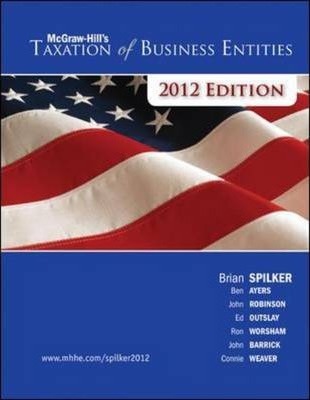
McGraw-Hill's Taxation of Business Entities 3rd Edition by Connie Weaver, Brian Spilker, Edmund Outslay, John Robinson, Ronald Worsham, Benjamin Ayers, John Barrick
Edition 3ISBN: 9780077924522
McGraw-Hill's Taxation of Business Entities 3rd Edition by Connie Weaver, Brian Spilker, Edmund Outslay, John Robinson, Ronald Worsham, Benjamin Ayers, John Barrick
Edition 3ISBN: 9780077924522 Exercise 61
On July 1 of year 1, Riverside Corp. (RC), a calendar-year taxpayer, acquired the assets of another business in a taxable acquisition. When the purchase price was allocated to the assets purchased, RC determined it had purchased $1,200,000 of goodwill for both book and tax purposes. At the end of year 1, the auditors for RC determined that the goodwill had not been impaired during the year. In year 2, however, the auditors concluded that $200,000 of the goodwill had been impaired, and they required RC to write down the goodwill by $200,000 for book purposes.
a. What book-tax difference associated with its goodwill should RC report in year 1 Is it favorable or unfavorable Is it permanent or temporary
b. What book-tax difference associated with its goodwill should RC report in year 2 Is it favorable or unfavorable Is it permanent or temporary
a. What book-tax difference associated with its goodwill should RC report in year 1 Is it favorable or unfavorable Is it permanent or temporary
b. What book-tax difference associated with its goodwill should RC report in year 2 Is it favorable or unfavorable Is it permanent or temporary
Explanation
Book tax differences
Using generally ac...
McGraw-Hill's Taxation of Business Entities 3rd Edition by Connie Weaver, Brian Spilker, Edmund Outslay, John Robinson, Ronald Worsham, Benjamin Ayers, John Barrick
Why don’t you like this exercise?
Other Minimum 8 character and maximum 255 character
Character 255


